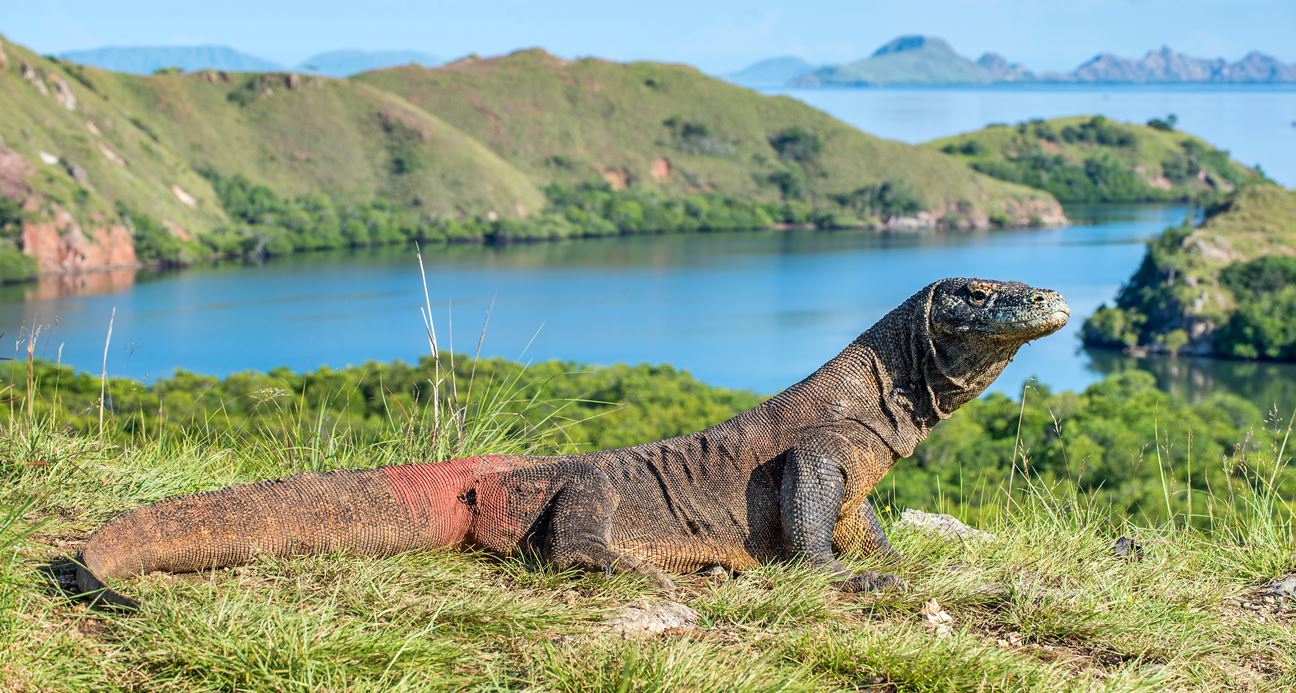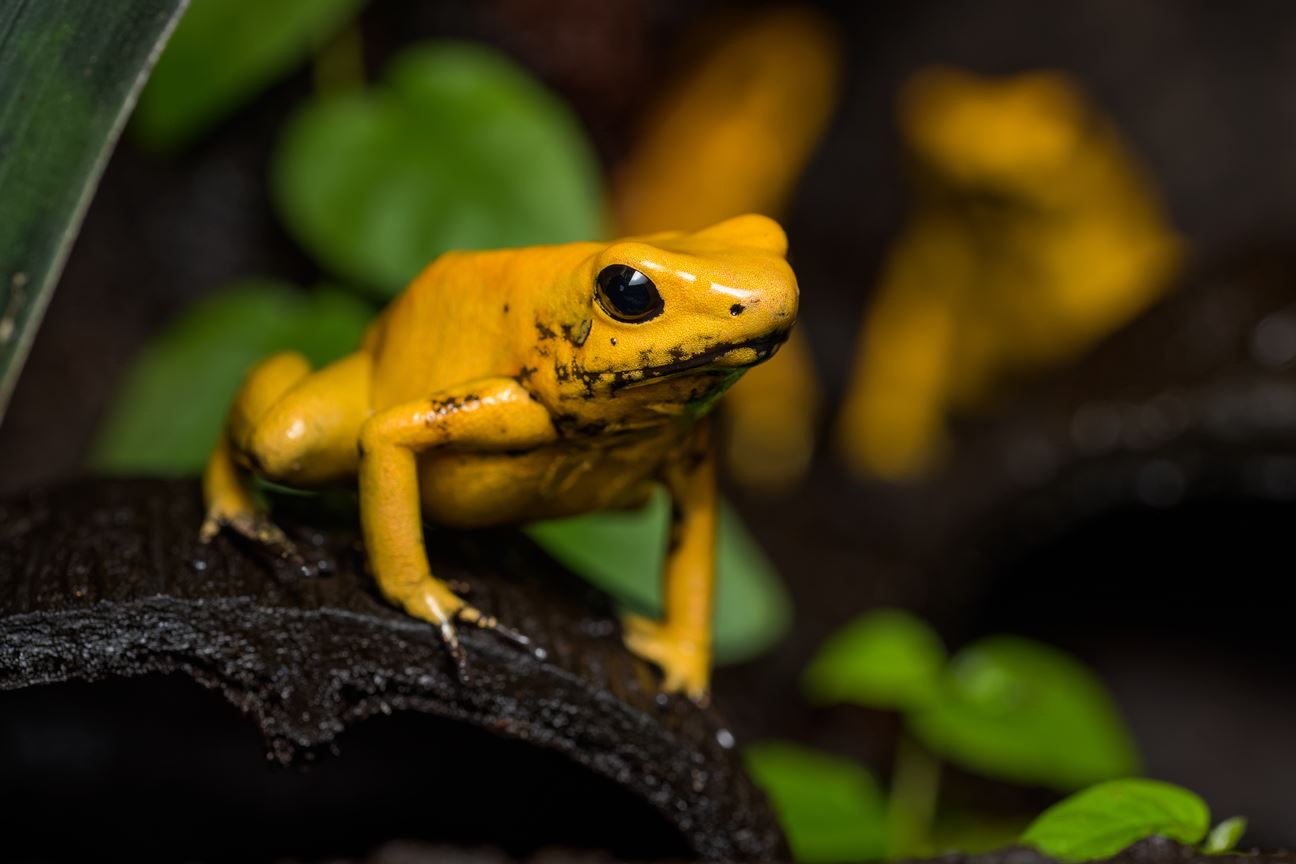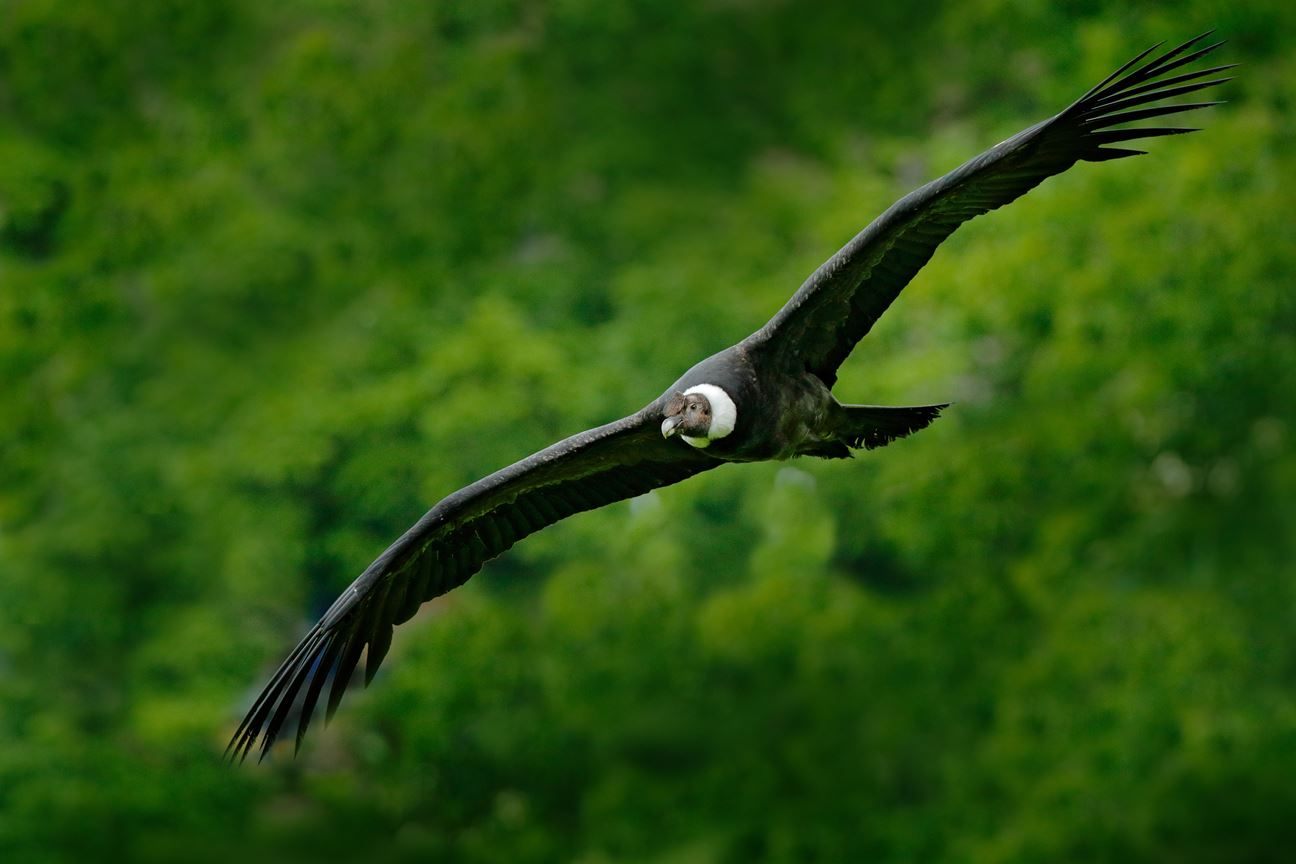Their biodiversity is enormous and completely awe-inspiring. These megadiverse countries and its palette of innumerable lifeforms is truly enchanting.
These countries feature a kaleidoscope of biodiversity that lives within its equally diverse habitats, where a superlative range of wildlife — some of the most diverse in the world — are found. These mega-diverse countries, with their thriving range of habitats, offer an astonishing breadth of impressively rich animal and birdlife.
But what makes a country mega-diverse?
The two key criteria for a country to be mega-diverse are:
- The country should have several marine ecosystems within its borders.
- The country should have many endemic species, a minimum of 5,000.
Geographically, they are extremely diverse and so are the plant and animal species that live here. With that said, in this article, we run down 17 mega-diverse countries from across the globe and their astounding array of endemic wildlife.
 The amazon rainforest of Brazil puts the country on the list of mega-diverse countries
The amazon rainforest of Brazil puts the country on the list of mega-diverse countries
Asia
The continent of Asia hosts an exceptional diversity of flora and fauna, including some very rare endemic species. Given its massive size, Asia covers areas of tundra, taiga, and tropical forests that support very diverse and outstanding biodiversity. Six countries from Asia are mega-diverse. Let us see what unique species live here.
With 4 biodiversity hotspots (Western Ghats, Himalayas, Indo-Burma Region, Sunderland), India harbours between 7 to 8% of all the recorded species from around the world. It is hardly surprising that India possesses high rates of endemism. When it comes to the global rankings of endemic vertebrates, India ranks fifth in reptiles with 156 species, thanks to the many lagoons, mangroves, backwaters, and a 7,517 kilometres coastline that supports a variety of marine ecosystems. India also ranks tenth in birds with 69 species and seventh in amphibians with 110 species. Some endemic species of India include Indian Rhinoceros, Bengal Tiger, Asiatic Lion, Lion-Tailed Macaque, Nilgiri Tahr, Pygmy Hog, and Malabar Civet.
Like India, China hosts four of the world's biodiversity hotspots. Since the mid-19th century, explorers have discovered over 30,000 vascular plant species in China, half of which could be found nowhere else. As one of 17 mega-diverse countries in the world, China harbours almost 14% of animals on earth. Approximately 7,516 species of vertebrates, 4,900 species of fish, 1,270 species of birds, and over 389 species of reptiles live here. Some of the most popular wild animals include Red Panda, Chinese Giant Salamander, Siberian Tiger, and Chinese Sturgeon. Did you know the Giant Panda from Sichuan Province is the national animal of China?
The country has a policy in place to maintain 50% of the total lands as forests. And this has been one of the greatest contributing factors in Malaysia’s rich biological diversity. The lush green tropical forests of peninsular Malaysia are home to 360 species of mammals, over 30 of which are endemic. The four big cats: the Indochinese Leopard, the Clouded Leopard, the Indochinese Tiger, and the Malayan Tiger; along with 618 bird species, 248 reptile species, 925 species of fish, and 153 frog species reside here. And the country’s floral diversity, with some 14,500 species of plants, makes Malaysia exceptionally biologically rich!

Komodo dragon seen at Rinca Island, Indonesia. Photo By Sergey Uryadnikov on Shutterstock
Indonesia's terrestrial biodiversity is the second richest in the world. Its incredible richness of species and ecosystems makes Indonesia one of the mega-diverse countries in the world. The country extends over more than 17,000 islands and transitions between the Wallacea, Indo-Malaya, and Australasia biogeographic regions and thus features superb freshwater and marine domains. Together, these hold important flagship species like Komodo Dragons (heaviest lizards in the world), Orangutan, Helmeted Hornbill, the Black Ape, and Cendrawasih along with 1,748 avifauna species, of which 457 are endemic.
The archipelago nation of the Philippines has about 7,100 islands offering many species-rich environments. Due to its diverse habitats and geographical isolation, the country shows high rates of endemism. There are over 530 bird species, including the second-largest eagle in the world, the Philippine Eagle. At 61%, the country also boasts one of the highest levels of mammal endemism! The Tamaraw or the Mindoro Dwarf Buffalo, Visayan and Philippine Warty Pigs, and Visayan Spotted Deer are a few of the largest and most impressive mammals found here.
This island nation in the southwestern Pacific Ocean accounts for almost 5% of the global biodiversity. The country is particularly rich in Marsupials, Bats, Wallabies, Rodents, and Honeyeaters. Of the 190 species of mammals that live here, many are closely related to those in Australia. Papua New Guinea is also home to the world’s largest pigeon (the Southern Crowned Pigeon) and the world’s smallest parrot (the Red-breasted Pygmy Parrot). As the third-largest rainforest in the world, Papua New Guinea has thousands of orchids and ferns. Almost 8 out of 10 of these species are endemic. Luckily for the plant and animal life here, much of Papua New Guinea has remained unknown and untouched.
Australia

Australian Koala Bear with her baby. Photo By worldswildlifewonders on Shutterstock
Between 7% to 10% of the Earth’s species occur in Australia. The country broke away from the supercontinent of Gondwanaland that resulted in millions of years of isolation, making Australia one of the mega-diverse countries of the world. Even though the distribution and abundance are uneven across the country, Australia has some unique flora and fauna. The endemic plants, mammals, reptiles, and frogs found here stand at a whopping 80%. Meaning, they are found nowhere else on earth. And these include Fitzroy River Turtle, Mistletoe Bird, Tasmanian Devil, Laughing Kookaburra, and, of course, the Kangaroo.
Americas
North America and South America are biologically diverse continents with unique and spectacular ecosystems that support a surprising number and variety of wildlife species. With seven mega-diverse countries, the Americas are some of the most species-rich biomes on the planet.
The US has four biodiversity hotspots that are home to 115 mammals, 94 bird species, 142 reptile species, 229 amphibian species, and over 600 freshwater fish species that are only found here. The Continental United States and its surrounding islands are incredibly diverse and are home to about 2,972 animals. Animals like Bald Eagle, Cougar, American Alligator, American Bison, Bobcat, and Rattlesnake are some of the top wildlife animals found in the US.
Mexican wildlife is quite astonishing and striking. The country is one of the world’s most biologically rich nations, and its treasure trove of wildlife includes some animals that one could have never guessed. The Isthmus of Panama joined the landmasses of North and South America and became home to a rich mixture of fauna and flora. Given Mexico’s rich diversity of wildlife and ecosystems, one can expect to see Axolotl, Sea Cow, Mexican Wolf, Coati, Mexican Prairie Dog, Kangaroo Rat, and Mexican Mountain Cat here.
 Golden poison frog By Thorsten Spoerlein on shutterstock
Golden poison frog By Thorsten Spoerlein on shutterstock
Of some 62,000 species of animals that live in Colombia, 8,800 species are endemic. Thus, of all the wildlife found in Colombia, 14% are unique species that cannot be found anywhere else. Given the inaccessible regions of the country, many endemic animals still stay hidden in the jungles. However, thanks to new scientific expeditions that are happening across Colombia, this number is set to rise to almost 28%. And this would make Columbia a country with the third-highest number of endemic species. Some unique animals found in Colombia include Colombian Woolly Monkey, Golden Poison Frog, the recently discovered Caquetá Titi Monkey, Blue Anole, Andean Squirrel, and Lehmann’s Poison Frog.
Brazil, with the most endemic species in the world, is also the most diverse. Brazil’s exotic flora and fauna can be found in its many tropical ecosystems that include the Amazon Rainforest, the coastal Atlantic Rainforest, and the Pampas of the south, among others. These ecosystems are home to animals that are not found anywhere else on earth. Representatives of Brazil’s well-known wildlife include the maned wolf, Spix's Macaw, all four species of Lion Monkeys, the Giant Toucan, and the Tufted Monkeys. Brazil's particularly diverse wildlife is known to delight visitors from all across the world.
The country of Ecuador is extremely bird-rich. So much so that Ecuador has more endemic bird species per kilometre square than the rest of the countries of South America combined. Ecuador may be the world's smallest mega-diverse country, but its biodiversity per hectare is the world’s greatest. The Galapagos Islands, which are a part of Ecuador, have the highest levels of endemism anywhere on earth! 97% of reptiles and land mammals and 80% of the land birds seen here are endemic. The native animals of Ecuador include Mountain Lion, Galapagos Sea Lion, Andean Fox, King Vulture, Scarlet Macaw, and the Galapagos Tortoise, among others.
 Did you know the wingspan of the andean condor is almost 10.5 feet! Photo By Ondrej Prosicky on shutterstock
Did you know the wingspan of the andean condor is almost 10.5 feet! Photo By Ondrej Prosicky on shutterstock
The vast expanses of the Amazon and the Peruvian Andes here in Peru feature one of the greatest biodiversity anywhere on the planet. With close to 2,000 species, Peru is one of the best places to visit for birding. Parrots and Parakeets are the most common, but also expect to see Toucans, Hummingbirds, Jays, and not to forget the scavenging Andean Condor! Terrestrial and aquatic wildlife are also found in plenty here! While Pink River Dolphins, Caiman, Serpentine Anacondas, and Piranhas are seen in the waters, animals like Llama, the Alpaca, pumas, and Mountain Tapir can be seen prowling through Perus’ tropical rainforests.
With over 350 mammal species, over 340 reptiles, and 1,417 bird species, Venezuela is home to mega-diverse flora and fauna. Its 2,000 miles of coastline that runs along the Caribbean Sea is home to close to 2000 marine species! Venezuelan cloud forests, along with rugged highlands and lowland marshes, feature 23% of reptilian and 50% of amphibian endemic species. Venezuela’s unique wildlife includes Scarlet Ibis, Howler Monkey, Giant Anteater, White-Bellied Spider Monkey, Crab-Eating Fox, and Jaguar among many others.
Africa
Think wildlife, think Africa! The continent of Africa is home to a rich and diverse animal and marine biodiversity. Savannahs, which are the richest grasslands in the world, are extensively found here and support the world's largest concentration of large land mammals. The three mega-diverse countries of Africa are:
At the southern tip of abundant Africa lies the country of South Africa with its full spectrum of habitats — from arid deserts to dense green forests. Naturally, as one can guess, the country is species-rich! As one of the mega-diverse countries in Africa, South Africa is home to the Big 5 - Cape Buffalo, Elephant, Lion, Leopard, and Black Rhino. There are over 200 mammal species found here, along with approximately 175 endemic bird species and some 140 amphibian species.
- Democratic Republic of Congo

Chimpanzees (Bonobos and common chimpanzees) are the only species of great apes that currently live in Africa. Photo by Ari wid on Shutterstock
The Democratic Republic of Congo (DRC) is second only to South Africa when it comes to biodiversity. The country is home to 50% of Africa’s tropical forests where some of the most spectacular endemic species like Congo Peacock, Okapi, Grauer’s Gorilla, Bonobo, Chimpanzees and Elephants live. DRC is home to some 400 other species of mammals, over 1,000 species of birds and some 700 species of fish.
Half of its birds, almost all of its reptile and amphibian species, and all of its lemurs are endemic to the African island of Madagascar. This is the world’s fourth-largest island and home to wonderful wildlife. After the island broke away from India some 88 million years ago, its species were forced to evolve in isolation. Today, 5% of all species ever known are found here. This includes 200 types of mammals, over 300 of birds, 260 of reptiles and over 266 amphibians.
The sheer wealth of wildlife found in these 17 countries has rightly earned them the title of being mega-diverse! Only makes one wonder, how much do we actually know about this spellbinding and spectacular planet?